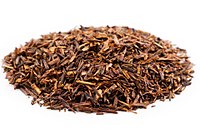
Photo from wikipedia
Tilia cordata Mill. is a favourite tree used in urban spaces. For this reason, it is important to know its sensitivity to environmental stress, which is particularly burdensome for vegetation… Click to show full abstract
Tilia cordata Mill. is a favourite tree used in urban spaces. For this reason, it is important to know its sensitivity to environmental stress, which is particularly burdensome for vegetation in urban spaces. The aim of the study was to investigate the properties necessary to control the growth of these trees and their subsequent use, i.e., chemical properties (percentage contents of cellulose, holocellulose, lignin, pentosans and substances soluble in NaOH and EtOH) as well as the chemical elements (K, Na, Mg, Ca and Fe, Zn, Cu, Pb, Cd, B, Ni, Cr, Al, As and Hg) and selected hygroscopic properties (hysteresis and sorption isotherms). Trees of Tilia cordata Mill. growing in environments exposed to environmental stress of varying severity were examined. Regardless of the growth conditions, in terms of its chemical composition, bark differs significantly from wood, showing twice the contents of soluble substances in NaOH and lignin and half the content of polysaccharides. Growth conditions clearly affect the range of selected chemical components in bark, e.g., substances soluble in ethanol, cellulose, or lignin. The main inorganic elements in bark and wood are Na, K, Ca, Mg and Zn. In bark, a relationship was found between the content of most chemical elements and differing environmental growth conditions. It was shown that environmental stress influenced the hygroscopic properties of wood and bark, which are a consequence of the percentage of chemical components.
Journal Title: Materials
Year Published: 2022
Link to full text (if available)
Share on Social Media: Sign Up to like & get
recommendations!